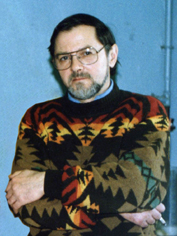| Laboratory of Chromosome Stability and Cell Engineering |
|
Interim Head Andrey V. KROPOTOVPhD, Senior ScientistÒål.: (812) 297-03-26
The laboratory was founded in 1983. From 1983 till 2009 the Head of the Laboratory was the Member-Correspondent of the Russian Academy of Sciences, Professor, D.Sci., Ph.D. Nikolai V. Tomilin (1944-2009). The cultivated mammalian cells are the main object of investigation. New original data on the organization of the processes of DNA repair and replication in the cell nucleus, on the mechanisms of the maintenance of stability of mammalian chromosomes containing the large number of repeats, on the role of retroposons in the evolution of regulation of genes expression, on association of genetic polymorphism in human populations with some phenotypic signs were obtained in the laboratory. The work of the Laboratory is supported by the grant of the Program of the Presidium of the Russian Academy of Sciences "Molecular and cell biology" and grant of the Russian Fund of Basic Research". |
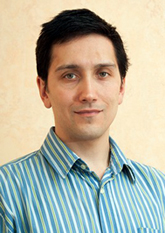
Nikolai V. Tomilin (photo 1995) |
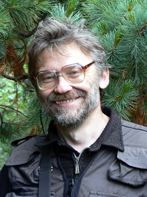
Vassiliy I. Kazakov
|
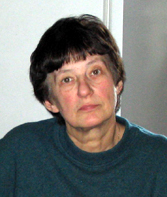
Maria P. Svetlova
|
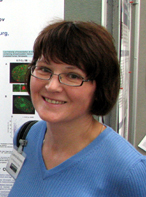
Liudmila V. Solovjeva
|
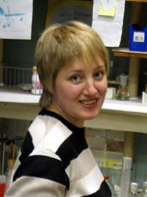
Olga S. Mudrak
|
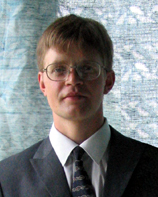
Vadim O. Chagin
| 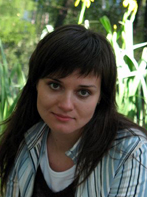
Nadezhda M. Usmanova
| 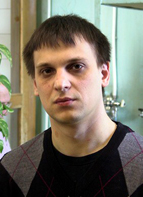
Denis V. Firsanov
|
|
The topics of the study
The main problems under investigation in the laboratory: the study of the mechanisms of maintenance of the chromosome stability in the cells of high eukaryotes, DNA repair and replication, genetic recombination, the cell control of mobile genes and their role in the regulation of gene expression. In the frames of these problems the main topics of the study are: The priority topic under investigation in the laboratory is the study of spatial-temporal organization in the cell nucleus of elementary steps of DNA repair synthesis during repair of DNA double strand breaks (DSB). Phosphorylation of histone H2AX (γ-H2AX) which occurs in megabase chromatin domains around DSB plays the important role in suppression of incorrect rejoining of DNA ends. This phosphorylation is performed by protein kinases ATM and ATR, the main control checkpoint kinases activated after DNA damage, and leads to the change in chromatin structure, that is expressed in particular in inhibition of transcription in γ-H2AX domains. The main biological function of γ-H2AX formation is the mobilization of cohesin complexes in the area of DSB which fix DNA ends and suppress the formation of chromosome misjoining during DSB repair by non-homologous end-joining or repair by homologous recombination in case of presence of arrays of DNA repeats. Another important topic of investigations in the laboratory is the study of factors destabilization of genomes of higher eukaryotes by numerous DNA repeats. The formation of DNA DSB in repeats generates the ends which could initiate unequal recombination and chromosome aberrations, and genome protection could occur by suppression of DSB formation in DNA repeats by isolation of DNA ends or by preferential repair of these DSB by non-recombinational mechanisms. We have shown recently that interstitial repeats (TTAGGG)n that are present in large amount in the genome of Chinese hamster are protected by telomeric protein TRF1 which possibly stimulates the formation of special compact chromatin structure in chromosome disks enriched with indicated repeats. In investigations of the role of retroposons in evolution of control mechanisms of gene expression in humans we analyzed polymorphic insert of retroposon Alu in gene angiotensin-converting enzyme (ACE). The existence of such insert in both alleles of gene ACE (in insertion homozygotes) leads to two-fold decrease of enzyme activity in blood plasma in comparison with deletion homozygotes that possibly could be due to activity of Alu-associated transcription silencer. We performed the analysis of frequency of deletion allele of St-Petersburg outstanding sportsmen and found that this frequency is significantly increased in outstanding sportsmen in those branches of sports where the duration of extra cardio-vascular exercise stress does not exceed 2 minutes. This genetic marker could be used therefore for selection of children pre-disposed to outstanding results in sprinter branches of sports. Free radicals or active oxygen forms (AOF) inevitably formed in mitochondria during breathing are of great importance in the damage of mammalian genomes and in the aging. AOF induce specific oxidation of guanine in DNA (8-oxyguanine, 8-OG), found to be a pre-mutational DNA damage. There are two antioxidant proteins in mitochondria related to the family of peroxyredoxines neutralizing AOF: peroxyredoxines 3 and 5(PRX3 and PRX5). The gene PRX5 was first identified in our laboratory in 1997 as a gene which expression is suppressed by infection of cells with adenovirus 5. Further investigations of this gene which was first sequenced in 1999 have shown that PRX5 suppresses the transcription of Alu-repeats by RNA-polymerase III in vitro, it is apoptosis inhibitor and it suppresses of 8-OG in mitochondrial as well as in nuclear DNA. This protein is very important for protection of lung epithelium contacting with oxygen, and PRX5 is expressed at high level in all human tissues. At present the regulation of PRX5 expression is under investigation as well as possible approaches of increasing its expression in human tissues. Publications of the laboratory during 2005-2010 The original articles in international journals:
The reviews in international journals and books:
The original articles in Russian journals:
The reviews in Russian journals:
|
Structure Home |
